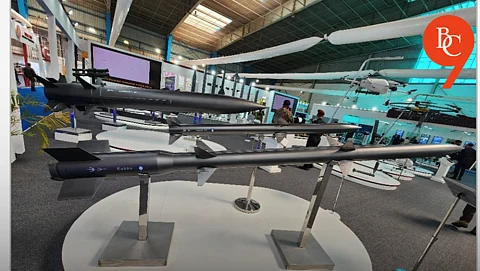

India is poised to achieve a significant milestone in its quest for self-reliance in defence technology as the Defence Research and Development Organisation (DRDO) prepares to conduct the first test of the Project Kusha M1 missile in September 2025. This test marks a pivotal moment in the development of a homegrown, advanced air defence system designed to counter a wide spectrum of aerial threats and reinforce the nation’s security architecture.
Project Kusha, officially known as the Extended Range Air Defence System (ERADS), is one of DRDO’s flagship initiatives. The system is engineered to provide layered protection against modern aerial threats, including stealth fighters, drones, cruise missiles, and precision-guided munitions. The M1 missile, with a range of 150 km, is the first of three interceptor variants under development, followed by the M2 (250 km) and M3 (350 km) missiles.
The M1 interceptor is equipped with an Active Electronically Scanned Array (AESA) seeker, infrared (IR) and radio frequency (RF) guidance, and a dual-pulse solid rocket motor for enhanced maneuverability. Its kill vehicle features a Seeker Stabilization and Tracking System (SSTS) and thrust vector control, enabling it to intercept fast-moving, maneuvering targets with a single-shot kill probability exceeding 80%, rising above 90% in salvo mode.
A modular approach underpins Project Kusha’s development: while the kill vehicle remains common across all variants, each missile employs a unique booster to achieve its designated range. This strategy accelerates development and ensures adaptability against diverse threats, from short-range tactical missiles to long-range ballistic targets.
The upcoming test, scheduled from Launch Complex-IV at Dhamra, Odisha, will be a crucial demonstration of India’s indigenous defence capabilities. The installation of portable launchers and jet deflectors is already underway, highlighting DRDO’s commitment to rapid deployment and operational flexibility. The M1 missile’s airframe, based on the Akash-NG platform, incorporates a new ‘Indhan-1’ propellant and advanced thrust vectoring for superior performance.
Project Kusha is designed to bridge the operational gap between India’s MR-SAM (80 km) and Russian S-400 (400 km) systems, complementing existing assets like the Indo-Israeli Barak-8 and the indigenous Ballistic Missile Defence (BMD) system. Its seamless integration with the Indian Air Force’s Integrated Air Command and Control System (IACCS) will enable real-time coordination with both military and civilian radars, enhancing situational awareness and response.
The M1 missile’s successful test in September 2025 will pave the way for subsequent trials of the M2 and M3 variants, scheduled for 2026 and 2027 respectively. Bharat Electronics Limited (BEL), DRDO’s key industry partner, is on track to deliver prototypes within the next 12 to 18 months, followed by rigorous user trials lasting up to three years.
Full deployment of the Project Kusha system is anticipated by 2028–2029, offering the Indian Air Force and Navy a robust, multi-layered air defence shield capable of countering emerging threats and safeguarding national airspace.
